As the world becomes more technologically advanced, there is a growing demand for professionals who can work as research engineers. Research engineers are professionals who perform various tasks to improve existing products and develop new inventions. These engineers use their expertise and training to research a particular topic, test products for flaws, suggest ways to improve them, and create prototypes of new inventions that could potentially become marketable products. These professionals must have an insider’s understanding of engineering and specialized knowledge in both general engineering principles and a specific field of study. Therefore, a resume for the job of research engineer needs to communicate your level of expertise in these areas. Your resume should do this while also highlighting any transferable skills or past experiences that make you qualified for the job.
Research Engineer Resume Example
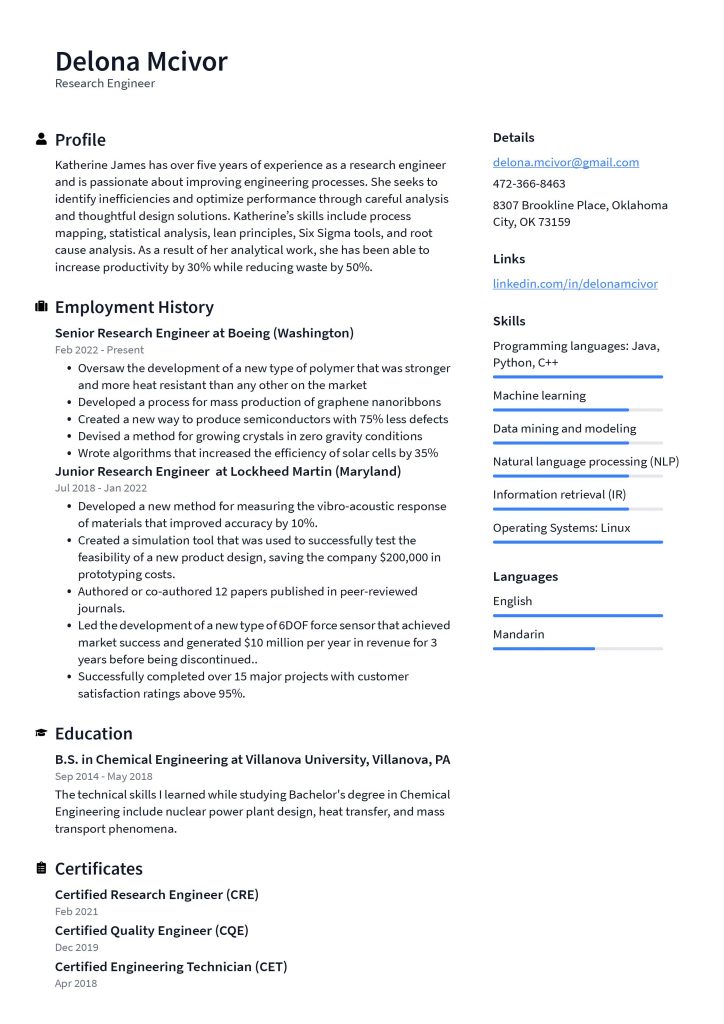
Download This Research Engineer Resume as PDF
Lead Research Engineer Resume Example
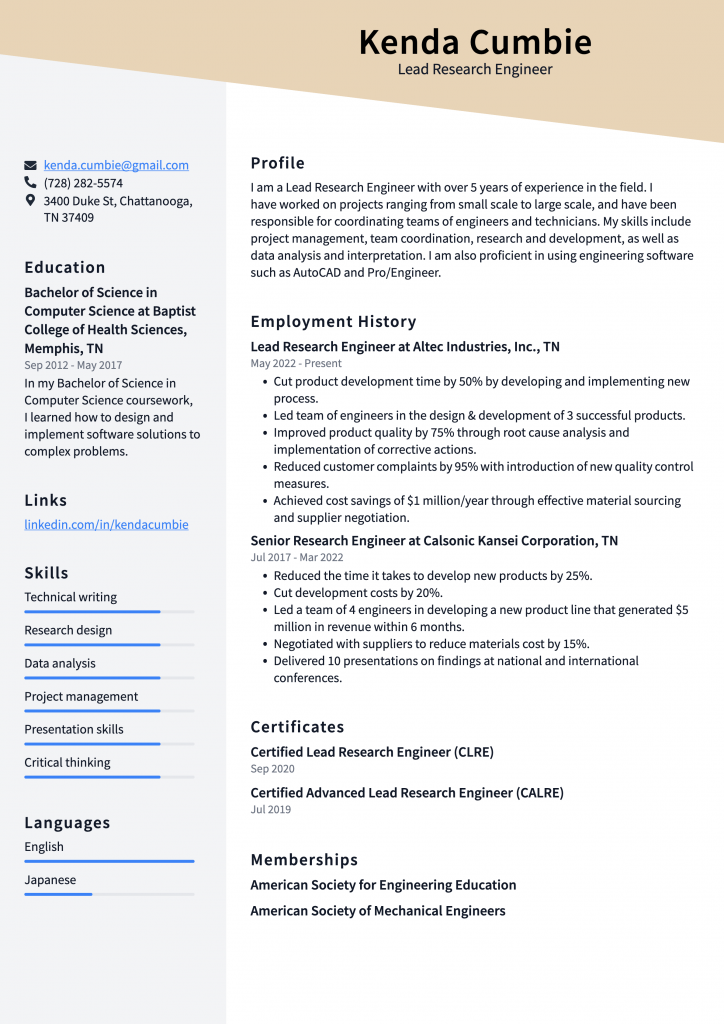
Download This Lead Research Engineer Resume as PDF
Principal Research Engineer Resume Example
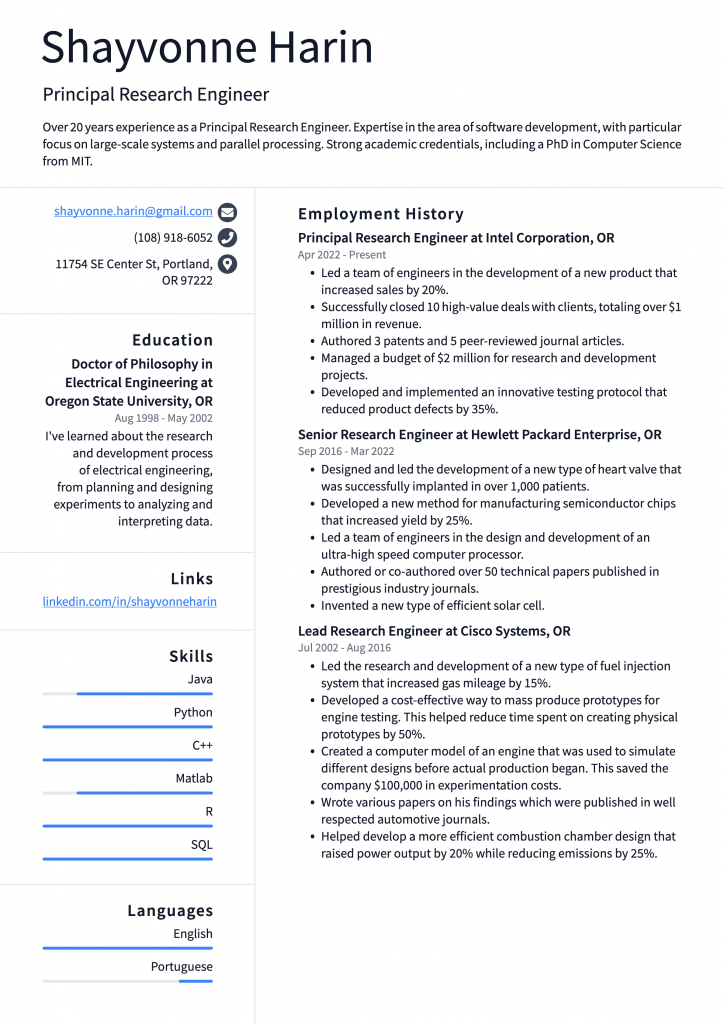
Download This Principal Research Engineer Resume as PDF
Staff Research Engineer Resume Example
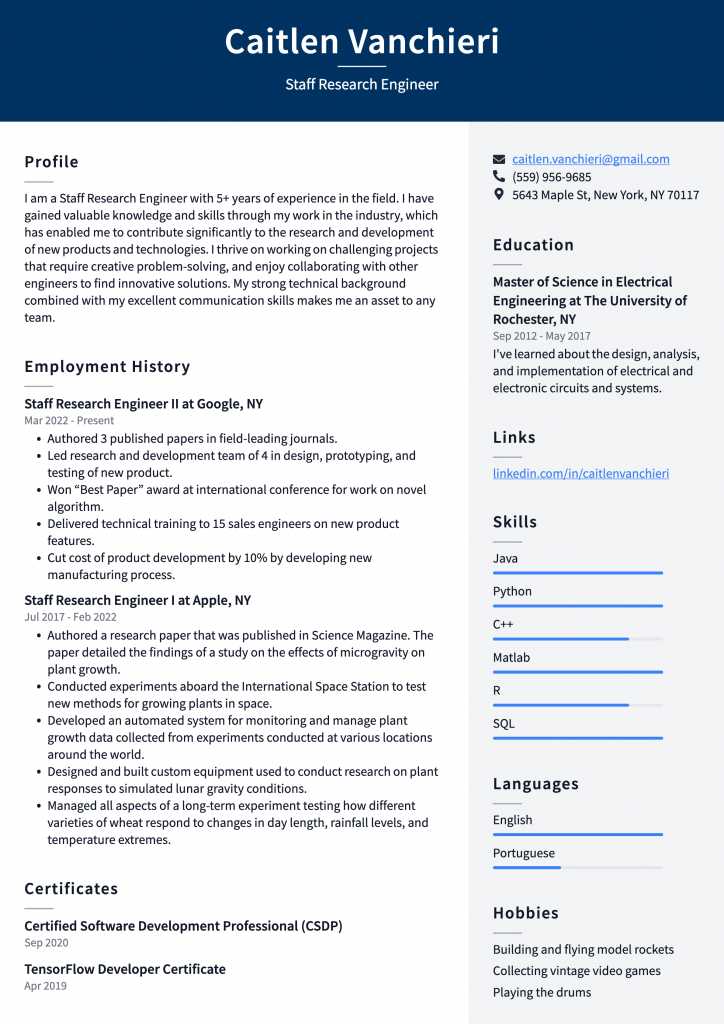
Download This Staff Research Engineer Resume as PDF
Associate Research Engineer Resume Example
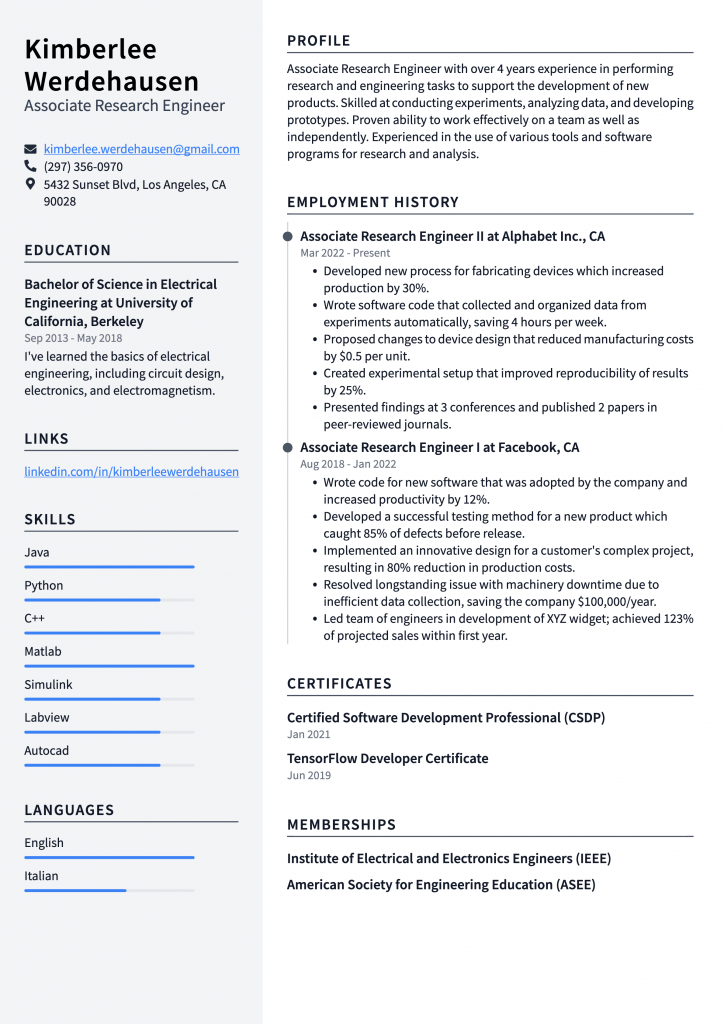
Download This Associate Research Engineer Resume as PDF
Research Engineer II Resume Example

Download This Research Engineer II Resume as PDF
Research Engineer I Resume Example
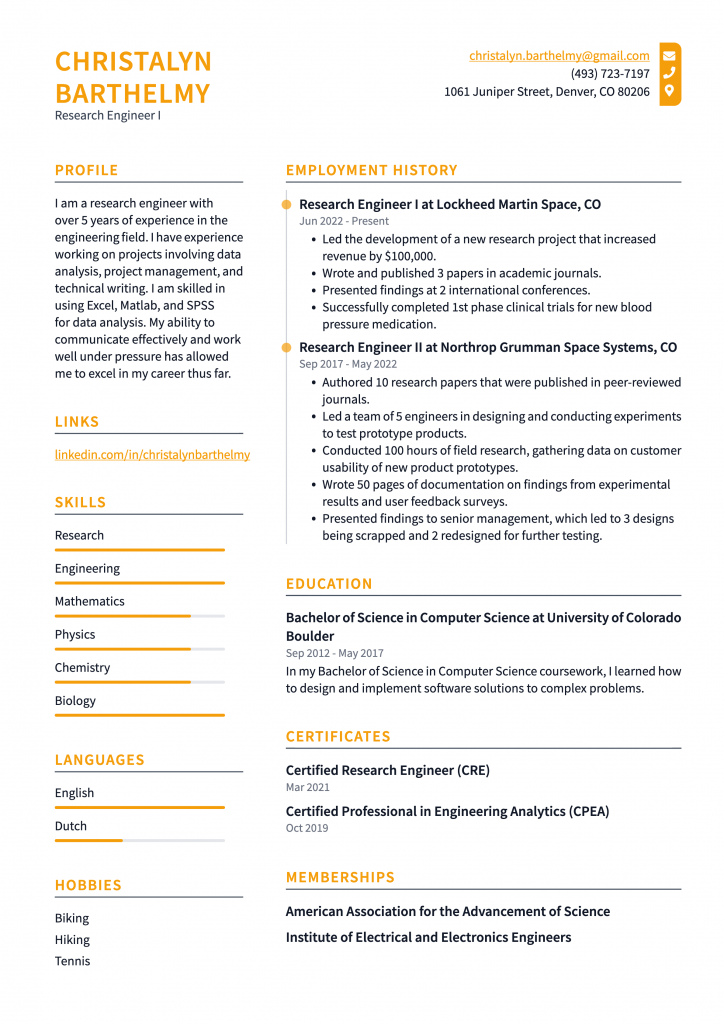
Download This Research Engineer I Resume as PDF
Step 1: Decide on the Format and Layout for Your Resume
Your resume format and layout will depend on the type of research engineer job you’re applying for. Two general forms are typically seen in research engineers resume the chronological and functional format. The chronological resume format is the more traditional resume format. This format lists job experience, education, and other qualifications in chronological order. This is the format you want to use if you’re applying for a job that requires specific technical skills or experience. The functional resume format omits a chronological employment history instead of focusing on knowledge, skills, and qualifications relevant to the job. This is the format you want to use if you’re applying for an entry-level position or if you lack recent experience.
Step 2: Show Your Expertise and Skills
The top section of your resume is the best to show off your expertise and skills. In this section, list the areas of engineering you specialize in and any skills that are transferable to the industry. You can also include computer software skills you have acquired relevant to the job. Remember that research engineers are expected to be well-rounded professionals who understand the nuts and bolts of how products and machines work. Therefore, include skills in engineering design, product development, and project management. You should also have any other skills relevant to the job, such as communication skills, data analysis, problem-solving skills, and interpersonal skills.
Step 3: Show Your Education
If you are new to the industry and just starting, you may be more likely to be hired if you have a new degree from an engineering program. Include the name of your school, the degree you received, and the date you graduated. In addition, include any honors, scholarships, or special recognitions you received during your studies. Of course, education is still vital for those who are further along in their careers, but you may also want to include any other training you have completed that is relevant to the job. For example, include any seminars, workshops, certifications, or other activities you have completed. In addition, you may want to consider including any online training or courses you have completed.
Step 4: Show Any Qualifications You Have
Any qualifications or certifications you have acquired are a great way to make yourself stand out as a candidate for the job of research engineer. This could include previous work experience, professional organizations, or membership in groups related to the industry. Ensure the name of the qualification, relevant information about the stuff, and the date you received it. This will help hiring managers and recruiters understand how you fit the bill for the job.
Step 5: Show Any Involvement in Professional Groups or Organizations
Being involved in professional organizations related to engineering or relevant to the industry is a great way to show off your expertise and make connections in the field. Include any memberships in professional organizations related to engineering or the industry. This could include IEEE, ASME, AIIM, IEEE, or other relevant industry organizations or groups. If you cannot find groups or organizations related to the specific field of engineering you work in, consider creating a group to connect with others in your area. This will help you make connections, get valuable networking experience, and expand your professional network.
Step 6: Show Your Past Employment – Resume Edition
The employment section of your resume lists your past jobs, the companies you worked for, and the dates you were employed there. If you worked for multiple organizations, take the time to list each company and the dates you worked there. Please also include the name of the position you held and your job description. If you were promoted in any of your jobs, have this information in the caption.
Step 7: Wrapping up
If you want to get hired as a research engineer:
- Make sure your resume is up to par.
- Follow these tips to create a resume that will get you hired.
- Remember that writing a great resume is to show off your expertise and make it stand out from the rest.
With the help of this guide, you can create the perfect resume for the job of research engineer. With this resume, you’re sure to get hired as a research engineer.